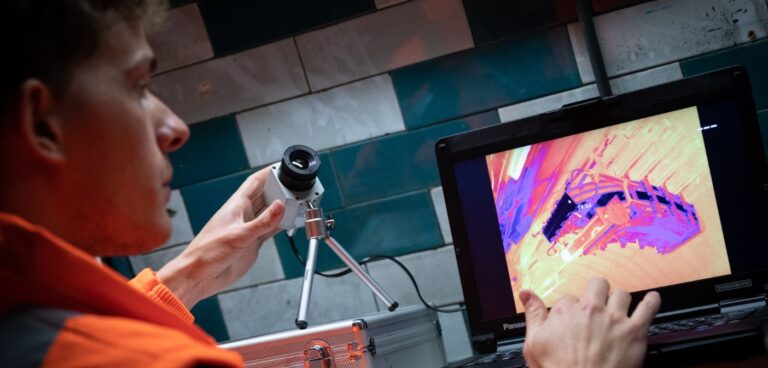Transport for London (TfL) has started trialling a cooling panel on a disused platform at Holborn station to test its suitability for reducing the temperatures in trains on the tube network’s deepest tunnels.
The trial comes after record-breaking temperatures were recorded in the UK this week.
The panel works by circulating and then chilling water, before sending air to be cooled through gaps in its structure.
t reportedly has the potential to half the costs of current temperature maintenance technology.
The project is part of the UK government’s TIES Living Lab programme and is one of 10 ongoing data, digital or infrastructure-focused projects. The Department for Transport and Innovate UK have provided 70% of the funding.
Subject to the results of the trial and available funding, TfL will test the solution for use on other deep lines.
The Piccadilly line was selected for the current trial as TfL plans to introduce new air-conditioned trains on the line from 2025, followed by a gradual withdrawal of older vehicles.
TfL claims that this, in conjunction with a planned increased in services, makes the cooling innovation necessary.
Some of the 120-year-old tunnels and stations have reportedly proven expensive and difficult to cool in the past.
Lab tests have demonstrated a reduction of 10-15oC using the panels, which technicians are now trying to achieve in Holborn.
Paul Judge, TfL’s project director for the Piccadilly line upgrade, said: “This innovative trial is taking place as we are experiencing record high temperatures.
“This new technology could play an important role in ensuring we are doing everything we can to protect TfL’s network against future temperature increases, helping to keep staff and customers safe and comfortable.
“The TIES Living Lab project has given us a great collaborative platform for sharing innovative ideas, data and good practice with a range of suppliers.”
According to TfL, initial results indicate that the panel offers a better alternative to cooling the deep tube lines than the current system in place.





